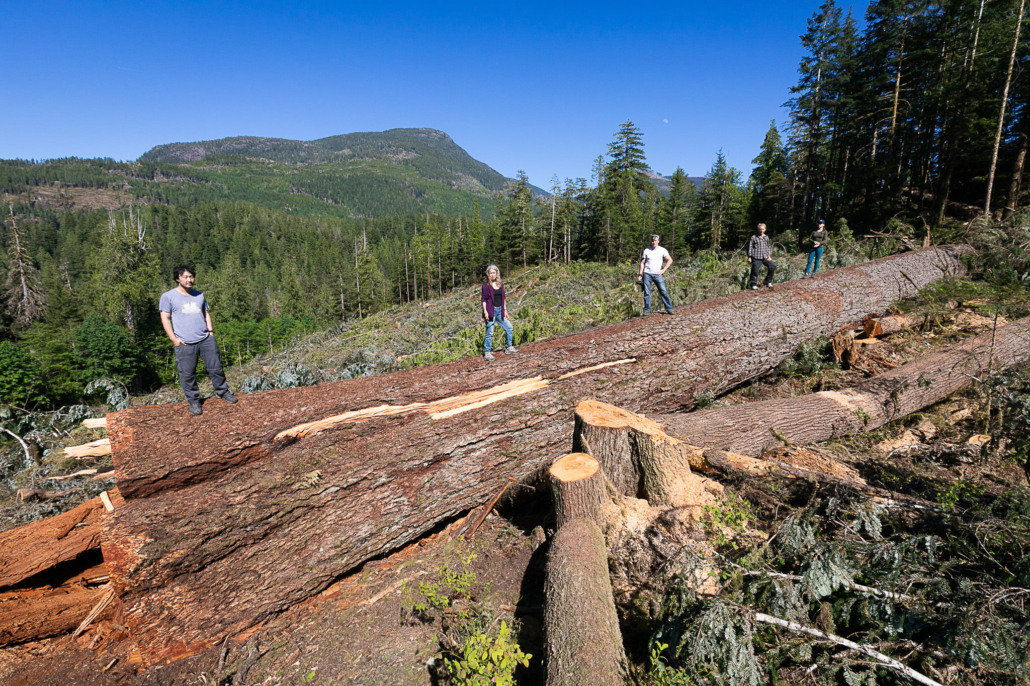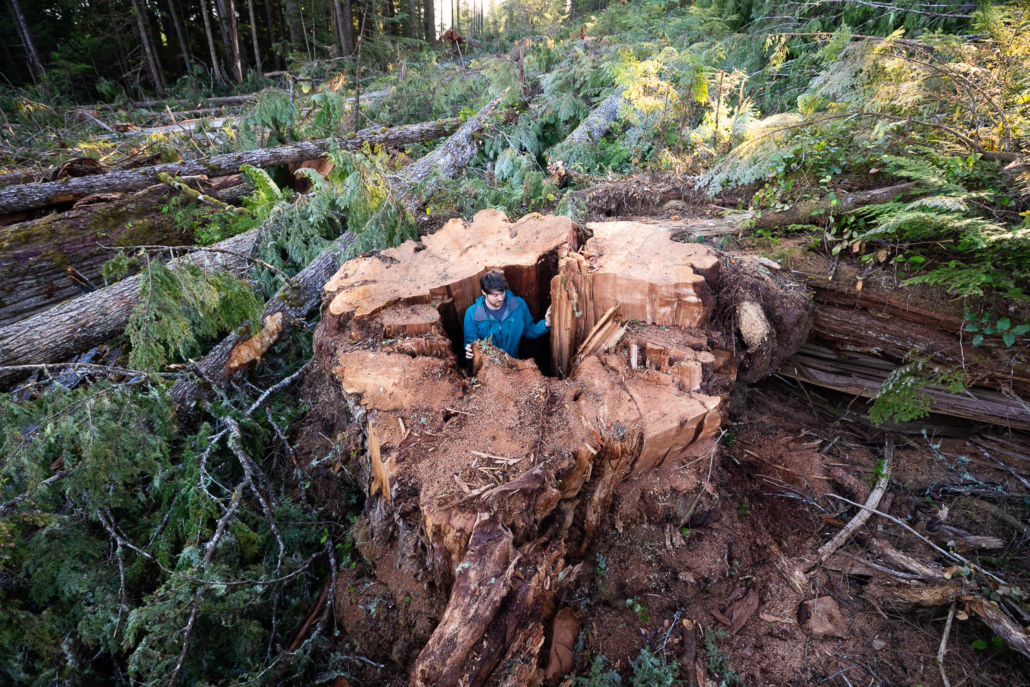 Apr 20 2012
Apr 20 2012Media Release: Christy Clark Grove
For Immediate Release
April 20, 2012
Ancient Forest Alliance identifies Canada’s 8th widest known Douglas fir, the “Clark Giant”, found in the unprotected Christy Clark Grove.
Victoria, British Columbia – In honour of Earth Day this Sunday, the Ancient Forest Alliance is naming a recently found grove of unprotected, near record-size old-growth trees on Vancouver Island the “Christy Clark Grove” after BC’s premier. The group hopes the new name will motivate Premier Clark to protect the grove and develop a plan to protect endangered old-growth forests across BC instead of supporting their continued destruction. Federal College Grants
See spectacular images at:https://ancientforestalliance.org/photos.php?gID=16
“We’re hoping that Christy Clark won’t let the Christy Clark Grove get cut down, and will show some leadership by creating a plan to protect BC’s endangered old-growth forests,” stated TJ Watt, Ancient Forest Alliance photographer and campaigner, and discoverer of the Christy Clark Grove. “Already 75% of Vancouver Island’s productive old-growth forests have been logged, including 90% of the biggest trees in the valley bottoms. Why go to the end of an ecosystem when there is an extensive second-growth alternative now to sustain the forest industry?”
The newly found grove is on unprotected public (Crown) lands not far from the town of Port Renfrew in the Gordon River Valley on southern Vancouver Island, just a half an hour drive from the famous Avatar Grove that was recently protected due to public pressure.
The Christy Clark Grove includes a near record-size Douglas-fir tree 10 feet wide in trunk diameter (31 feet circumference), making it Canada’s 8th widest known Douglas fir tree in relation to the trees listed in the BC Big Tree Registry (see https://bigtrees.forestry.ubc.ca/files/2011/11/Big_Trees_Register.pdf). The enormous tree has been dubbed the “Clark Giant”. The Grove also includes a huge burly redcedar over 13 feet wide, nicknamed the “Gnarly Clark”, as well as many other ancient trees.
Last week the BC government released its “BC Forest Strategy” (https://www.for.gov.bc.ca/mof/forestsectorstrategy/Forest_Strategy_WEB.PDF) that essentially continues the existing, generally destructive status quo policies. Increasing wood exports to China, including massive raw log exports and logs from old-growth hemlock-amabilis fir stands (ie. “hem-bal” stands, once considered to be of low value), seems to be the BC government’s central forestry strategy. Without further restrictions on raw log exports, the BC government is ultimately risking losing BC’s milling jobs as China ramps up its wood manufacturing capacity over the next few years, which will likely lead to diminishing lumber exports from Canadian mills as China rejects our lumber with its higher labour costs in favour of their own cheaper lumber – milled from BC’s raw logs.
“BC’s Forest Strategy continues the generally unsustainable status quo – what we really need is a BC Old-Growth Forest Strategy. The coastal forest industry’s twenty year decline is essentially driven by unsustainable resource depletion, where the biggest, best valley-bottom ancient trees have been largely logged-off, leaving the industry with diminishing returns as the trees get smaller and more expensive to reach high up the mountainsides,” stated Ken Wu, Ancient Forest Alliance campaigner. “We need the BC government to show real leadership and end the War in the Woods by saving our endangered old-growth forests and facilitating a sustainable, value-added second-growth forestry transition.”
Most disturbing in the BC Forest Strategy report is reference to maintaining the timber supply for BC interior mills reeling from the industry’s unsustainable expansion in recent years to take advantage of the pine beetle infestation – but now afflicted by declining timber volumes due to overcutting and decomposing beetle-killed trees. A leaked cabinet report last week revealed that in the Cariboo-Chilcotin region the BC government is now considering the possibility of opening protected old-growth forests (Old-Growth Management Areas), wildlife protections (Wildlife Habitat Areas) , scenic protections (Visual Quality Objectives) and other forest reserves for logging to keep supplying the interior logging industry at an unsustainable pace.
See articles in the Vancouver Sun and The Tyee.
“There’s no bloody way the BC Liberal government is going to open up protected wildlife habitat, scenic corridors and old-growth forest reserves for logging without a hell of a fight from BC’s conservation movement and tourism industry,” stated Wu. “That’s an absolute no-go for us.”
In addition, one year ago the BC government promised to create a new legal tool to protect BC’s largest trees and monumental groves – so far nothing has materialized. Such a tool could be used to protect the Christy Clark Grove. See: https://ancientforestalliance.org/news-item.php?ID=198
More importantly, the BC government has so far failed to undertake any new province-wide plans to systematically protect BC’s endangered old-growth forests, but instead continues to use highly misleading statistics that lump-in vast tracts of marginal, stunted “bonsai” forests in bogs and on subalpine mountain tops (not under threat of logging in general) with BC’s productive (ie. large trees, faster growth rates, where logging occurs) but endangered old-growth forests in order to inflate the amount of old-growth forests remaining.
“Releasing stats that combine stunted, marginal forests in bogs and high altitudes with our endangered, productive old-growth forests where the giant trees grow is like including your Monopoly money with your real money and then claiming to be a millionaire,” stated TJ Watt, AFA co-founder.
Both Quebec and Ontario have committed to protecting 50% of their boreal forests, which constitute the vast majority of the land in those provinces.
The Ancient Forest Alliance is calling on the BC government to undertake a Provincial Old-Growth Strategy to protect BC’s endangered old-growth forests, ensure the sustainable logging of second-growth forests, and to ban raw log exports to ensure a guaranteed log supply for BC mills. Old-growth forests are important to sustain endangered species, BC’s multi-billion dollar tourism industry, clean water, the climate, and many First Nations cultures.
“We’re still waiting on the BC government to show some leadership to create a conservation legacy in BC for our endangered old-growth forests, and to end raw log exports. We’re ready to give credit where credit is due. We want to give credit for good things. But we’re also prepping for a potential major battle in the lead-up to the BC election where there will be no prisoners taken, if need be”, stated Wu.






